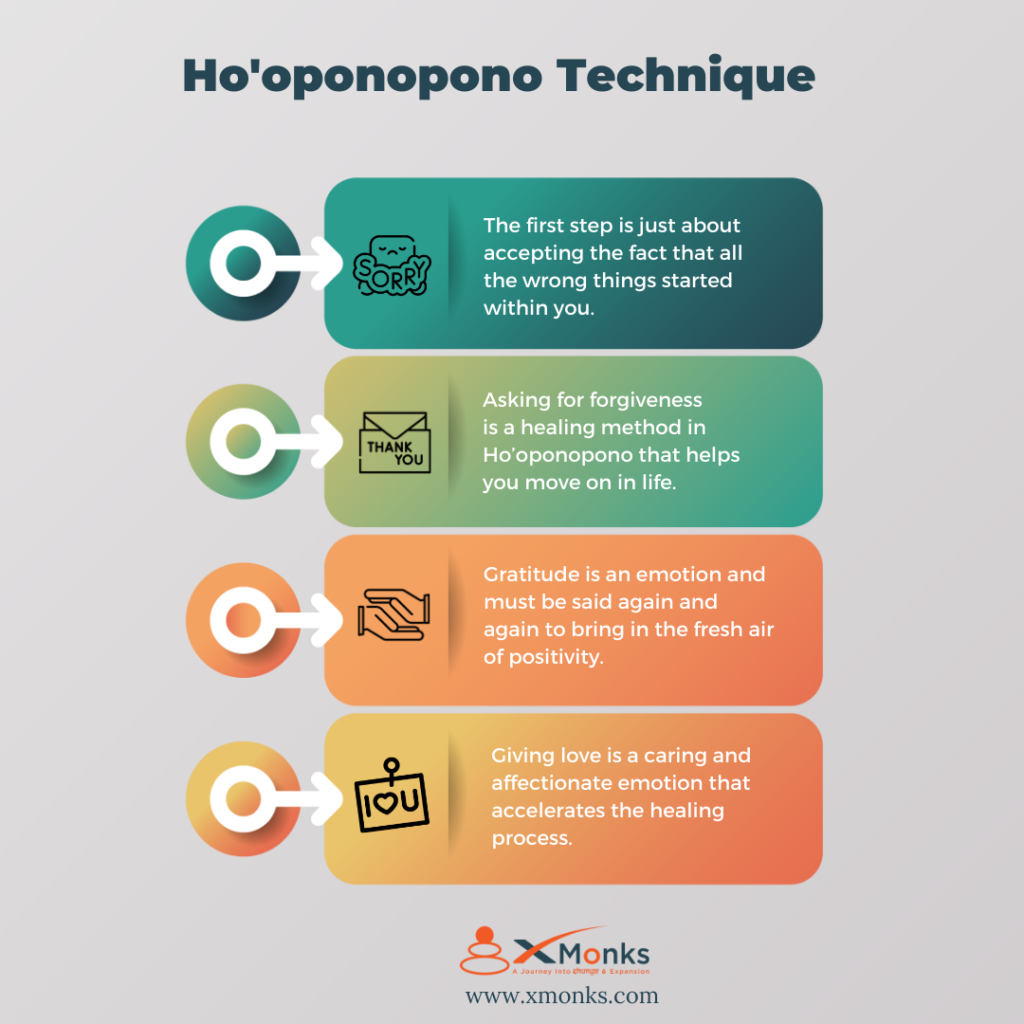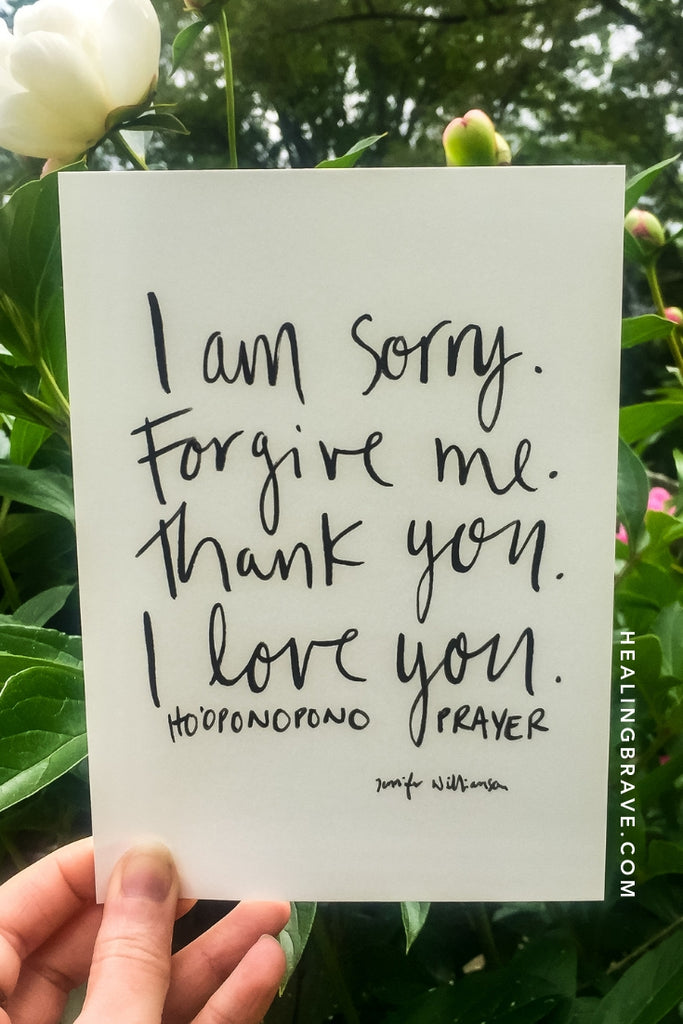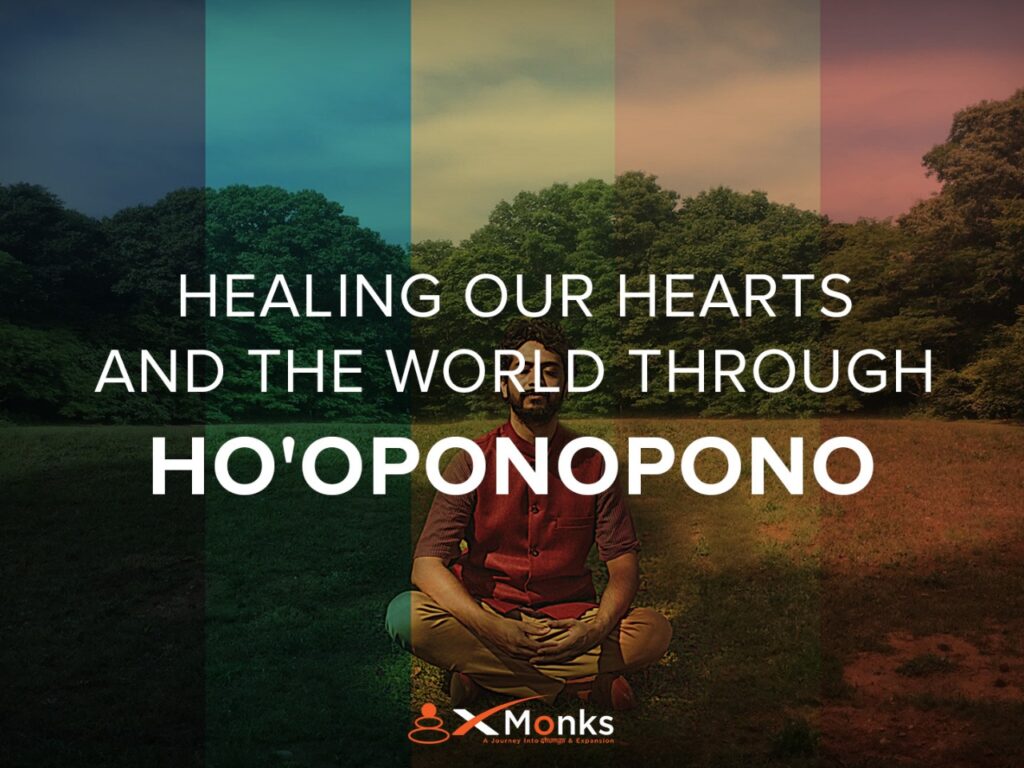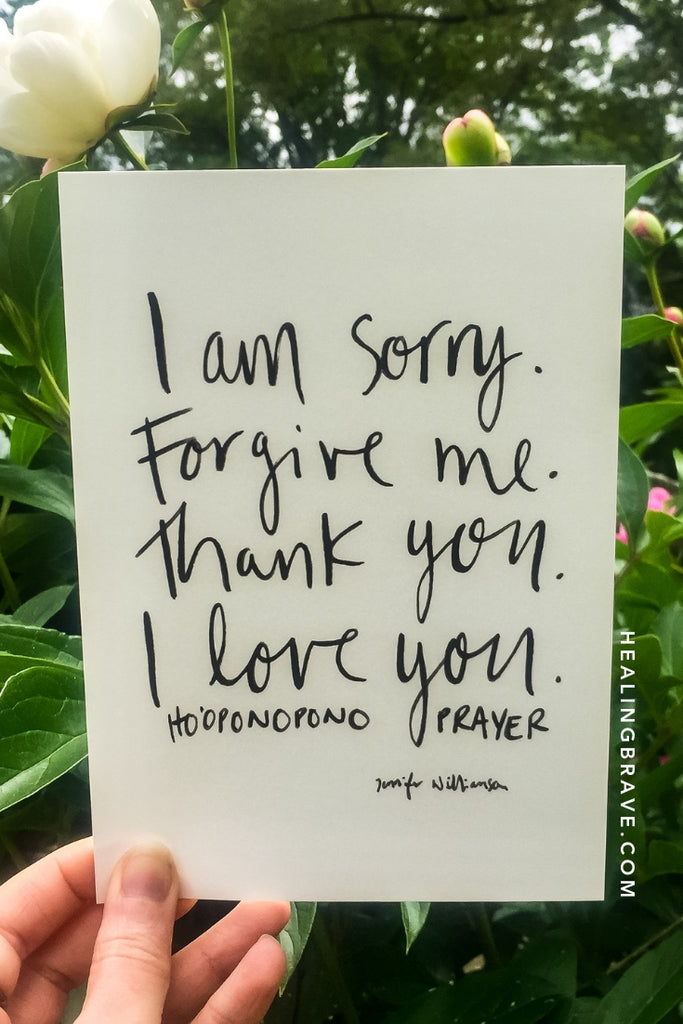In this article, we will explore the fascinating practice of Ho’oponopono and its profound impact on emotional healing. Discover how this ancient Hawaiian technique can bring about transformation by clearing emotional blockages, bringing inner peace, and fostering self-love. Uncover the secrets behind Ho’oponopono’s power to heal and find out how you can incorporate this practice into your own life for a deep and lasting emotional healing experience.
Understanding Ho’oponopono
What is Ho’oponopono?
Ho’oponopono is an ancient Hawaiian practice that translates to “to make right” or “to correct.” It is a powerful technique for emotional healing, forgiveness, and reconciliation. Ho’oponopono involves acknowledging and taking responsibility for our own negative emotions and thoughts, and actively working to release and let go of them. This practice is based on the belief that our external experiences are a reflection of our internal state, and by resolving our inner conflicts, we can bring about healing in all aspects of our lives.
Origins of Ho’oponopono
Ho’oponopono has its roots in traditional Hawaiian culture and is deeply intertwined with their spiritual beliefs and practices. It has been passed down through generations as a way to restore harmony and balance within families and communities. Originally, Ho’oponopono was conducted by a group of family members or community leaders, with the intention of resolving conflicts, promoting forgiveness, and fostering unity. Over time, it has evolved into a personal practice that individuals can engage in to heal their emotional wounds and cultivate inner peace.
Principles of Ho’oponopono
The principles of Ho’oponopono revolve around four key concepts: repentance, forgiveness, gratitude, and love. Repentance involves acknowledging our own role in creating negative experiences and taking responsibility for our thoughts, emotions, and actions. Forgiveness is an essential component of Ho’oponopono, as it allows us to let go of resentments and grudges, freeing ourselves from the burden of carrying emotional baggage. Gratitude is cultivated as a way to shift our focus towards appreciation and abundance, fostering a positive mindset. Finally, love is seen as the ultimate healing force, and by directing love towards ourselves and others, we can bring about deep healing and transformation.
The Connection between Ho’oponopono and Emotional Healing
Addressing the Root Cause of Emotional Issues
Ho’oponopono goes beyond simply managing or suppressing emotions. It delves into the root cause of emotional issues by recognizing that our negative experiences are a reflection of our own internal conflicts and unresolved issues. By taking responsibility for our emotions and exploring the underlying beliefs and thought patterns that contribute to them, we can address the root cause and initiate true healing.
Releasing and Letting Go of Negative Emotions
One of the core practices of Ho’oponopono is the act of releasing and letting go of negative emotions. This involves consciously acknowledging and accepting our emotions without judgment, while simultaneously recognizing that they do not define us. Through repetition of the four key phrases of Ho’oponopono and the use of various cleaning tools, we can gradually release and dissolve negative emotions, allowing for emotional healing and liberation.
Cultivating Forgiveness and Compassion
Forgiveness is a fundamental aspect of Ho’oponopono and plays a pivotal role in emotional healing. Through the practice of Ho’oponopono, we learn to forgive not only others but also ourselves. This act of self-forgiveness is especially important, as it allows us to let go of self-blame and self-criticism, freeing ourselves from the burden of guilt and shame. By cultivating forgiveness and compassion towards ourselves and others, we create a space for healing and transformation.
Finding Inner Peace and Harmony
The ultimate goal of Ho’oponopono is to find inner peace and harmony. By actively working on resolving our internal conflicts, we create an environment within ourselves that is conducive to emotional healing. As we release negative emotions, forgive ourselves and others, and cultivate a mindset of gratitude and love, we pave the way for a deeper sense of peace, contentment, and overall well-being.

Techniques and Practices of Ho’oponopono
The Four Key Phrases
The four key phrases of Ho’oponopono are simple yet profound tools for emotional healing. These phrases are:
- “I’m sorry”
- “Please forgive me”
- “Thank you”
- “I love you”
By repeating these phrases, either silently or aloud, we acknowledge our role in creating negative experiences, express remorse, seek forgiveness, express gratitude, and direct love towards ourselves and others. These phrases serve as powerful affirmations that help to shift our mindset and release emotional baggage.
The Process of Repentance and Forgiveness
Repentance and forgiveness are integral processes in Ho’oponopono. Repentance involves taking responsibility for our thoughts, emotions, and actions, and acknowledging their impact on our lives and the lives of others. This process allows us to become aware of our own patterns, beliefs, and behaviors that contribute to emotional distress. Forgiveness, on the other hand, involves letting go of resentments, grudges, and judgments towards ourselves and others. It is a practice of releasing the emotional ties that bind us to past experiences and allowing for healing and reconciliation.
Cleaning Tools for Emotional Healing
In addition to the four key phrases, there are various cleaning tools and techniques that can be used in Ho’oponopono for emotional healing. These tools include visualization, meditation, breathing exercises, journaling, and energy work. These practices help to purify and cleanse our minds, hearts, and souls, allowing us to release negative emotions and create space for healing and transformation.
Benefits of Ho’oponopono for Emotional Healing
Reduced Stress and Anxiety
Ho’oponopono offers a powerful antidote to stress and anxiety. By addressing the root cause of negative emotions and actively working to release and let go of them, we can experience a significant reduction in stress and anxiety levels. The practice of Ho’oponopono helps to calm the mind, soothe the emotions, and restore a sense of inner peace and tranquility.
Improved Relationships and Communication
Our emotional well-being has a direct impact on our relationships and communication with others. Through the practice of Ho’oponopono, we become more aware of our own triggers, patterns, and projections, allowing us to respond to others with greater empathy, understanding, and compassion. As we release negative emotions and cultivate forgiveness and love, our relationships naturally improve, leading to deeper connection and harmony.
Enhanced Emotional Well-being
Ho’oponopono is a powerful tool for enhancing emotional well-being. By actively engaging in the practice and consistently working on releasing negative emotions, we create a space within ourselves that is conducive to healing and growth. As we let go of emotional baggage, we experience an increased sense of lightness, joy, and overall well-being. We become more resilient, able to navigate life’s challenges with greater ease and grace.
Increased Self-Awareness and Personal Growth
Ho’oponopono facilitates profound self-awareness and personal growth. Through the practice, we gain insights into our own thoughts, emotions, and behaviors, allowing us to make conscious choices and decisions that align with our values and desires. As we cultivate self-forgiveness and compassion, we break free from limiting beliefs and patterns, opening ourselves up to greater possibilities and potentials.

Scientific Studies and Evidence
Research on Ho’oponopono for Emotional Healing
While there is limited scientific research specifically focused on Ho’oponopono for emotional healing, studies have explored related concepts and practices that align with its principles. Research on mindfulness, meditation, forgiveness, and gratitude have demonstrated their potential for enhancing emotional well-being, reducing stress and anxiety, improving relationships, and promoting personal growth. These findings suggest that the principles and techniques of Ho’oponopono may have similar benefits, although further research is needed to validate its efficacy.
Psychotherapeutic Perspectives on Ho’oponopono
From a psychotherapeutic perspective, Ho’oponopono aligns with several therapeutic approaches and techniques. It incorporates elements of cognitive-behavioral therapy, mindfulness-based therapy, and forgiveness therapy. The process of self-reflection, acknowledging and taking responsibility for one’s emotions, and actively working on releasing negative emotions bear resemblance to established therapeutic interventions. Integrating Ho’oponopono into traditional psychotherapeutic practices can offer a holistic approach to emotional healing and personal growth.
Integrating Ho’oponopono into Daily Life
Creating an Effective Ho’oponopono Practice
To integrate Ho’oponopono into daily life, it is essential to establish a regular practice. This can involve setting aside dedicated time each day for Ho’oponopono, whether it be in the morning, evening, or any other convenient time. It is also helpful to create a sacred space where you can engage in the practice without distractions. Consistency and commitment are key to reaping the full benefits of Ho’oponopono.
Using Ho’oponopono for Self-Healing
Ho’oponopono can be a powerful tool for self-healing. By directing the four key phrases towards ourselves, we can soothe our inner wounds, release self-judgment and criticism, and cultivate self-love and acceptance. This practice allows us to heal and reconcile the parts of ourselves that have experienced pain or trauma, leading to deep emotional healing and transformation.
Applying Ho’oponopono in Relationships
Ho’oponopono can also be applied in the context of relationships. By directing the four key phrases towards others, we can initiate forgiveness, healing, and reconciliation. This practice helps in resolving conflicts, releasing resentments, and fostering greater empathy and understanding in our relationships. It opens the door for deeper connection and harmony with others.

Tips and Advice for Effective Emotional Healing with Ho’oponopono
Being Patient and Persistent
Emotional healing with Ho’oponopono takes time and consistent effort. It is important to be patient with yourself and the process. The release of negative emotions and the cultivation of forgiveness and love may not happen overnight. Trust that the practice of Ho’oponopono will gradually bring about the desired emotional healing, and be persistent in your commitment to the practice.
Being Open and Mindful
Approach the practice of Ho’oponopono with an open mind and heart. Be willing to explore and confront your own emotions, beliefs, and patterns. Practice mindfulness by bringing your full attention to the present moment and observing your thoughts and emotions without judgment. This mindful approach allows for greater self-awareness and facilitates emotional healing.
Seeking Professional Support if Needed
While Ho’oponopono can be a powerful tool for emotional healing, it is important to recognize when professional support may be needed. If you are experiencing significant emotional distress or trauma, consider reaching out to a therapist or counselor who can provide additional guidance and support. A trained professional can help you navigate through deeper emotional issues and ensure your well-being.
Potential Challenges and Misconceptions
Resistance to Emotional Healing
One potential challenge in practicing Ho’oponopono is resistance to emotional healing. It is common for individuals to resist facing their own emotions, particularly if they have experienced trauma or unresolved issues. This resistance may manifest as skepticism, denial, or avoidance. It is important to approach emotional healing with patience, compassion, and gentleness, allowing yourself the time and space to heal at your own pace.
Misunderstandings about Ho’oponopono
Misunderstandings about Ho’oponopono can also present challenges to its effective practice. Some may view it as a magical cure-all or as a way to bypass personal responsibility. It is important to approach Ho’oponopono with a realistic understanding of its principles and practices. It is a process that requires active participation and personal accountability, and it is not a substitute for professional mental health care.
Balancing Personal Responsibility and Self-Blame
Finding the balance between personal responsibility and self-blame can be a delicate process in Ho’oponopono. While it is important to take responsibility for our own emotions and actions, it is equally important to avoid falling into the trap of self-blame and self-criticism. Ho’oponopono emphasizes self-forgiveness, self-compassion, and self-love, recognizing that healing begins with oneself. It is crucial to maintain this balance and engage in the practice with a mindset of growth and healing.

Personal Testimonials and Experiences
Individual Accounts of Emotional Healing
Numerous individuals have shared personal testimonials of the profound emotional healing they have experienced through practicing Ho’oponopono. From releasing deep-seated trauma and grief to finding forgiveness and inner peace, these accounts exemplify the transformative power of Ho’oponopono. These personal stories serve as inspiration and encouragement for those embarking on their own emotional healing journey.
Success Stories of Ho’oponopono
There have been success stories of Ho’oponopono in various areas of life, including relationships, career, and personal growth. Individuals have reported improved communication, reconciliation in severed relationships, and significant breakthroughs in their personal and professional lives. These success stories highlight the potential impact of Ho’oponopono as a tool for emotional healing and transformation.
Conclusion
Ho’oponopono is a profound practice for emotional healing that offers a holistic approach to addressing the root cause of emotional issues. By taking responsibility for our emotions, releasing negative emotions, cultivating forgiveness and love, and finding inner peace, Ho’oponopono enables us to experience deep emotional healing and transformation. Through its principles and techniques, Ho’oponopono offers a pathway to reduced stress and anxiety, improved relationships and communication, enhanced emotional well-being, and increased self-awareness and personal growth. While scientific research on Ho’oponopono is limited, its alignment with established therapeutic approaches and the personal testimonials and success stories of its practitioners affirm its potential benefits. By integrating Ho’oponopono into daily life, practicing patience and persistence, and seeking professional support when needed, individuals can embark on a journey of profound emotional healing and self-discovery.

